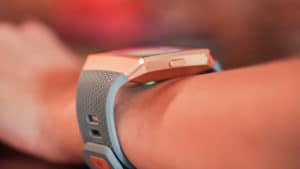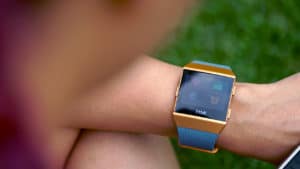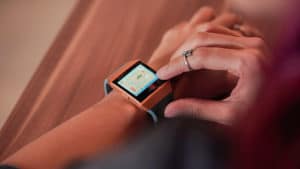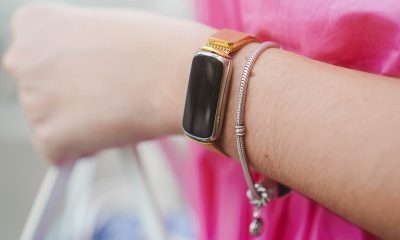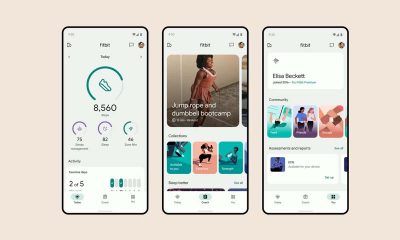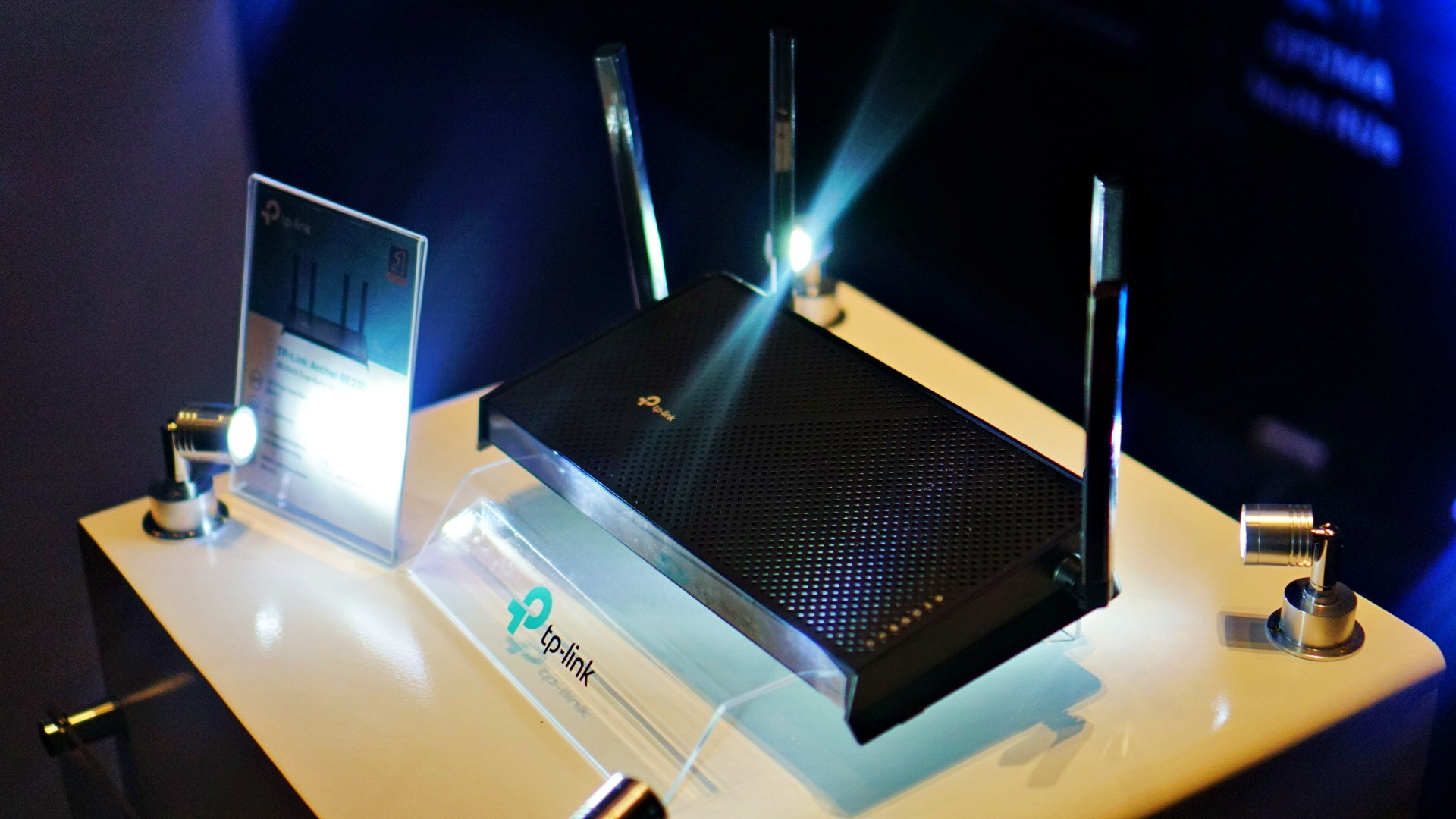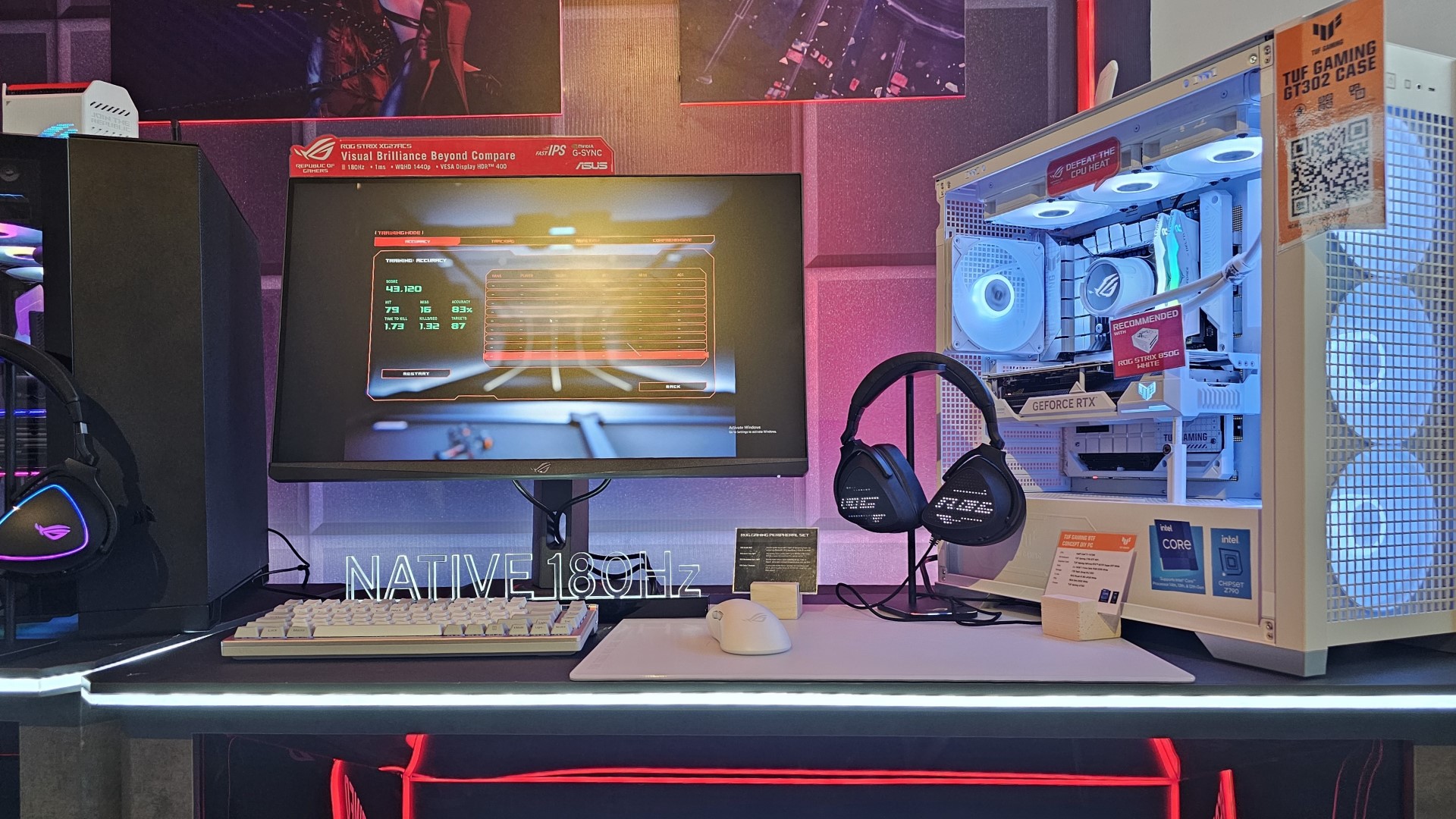
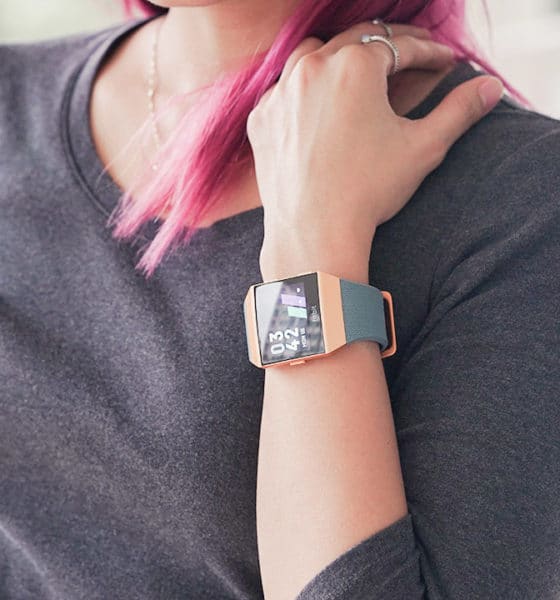
I had previously reviewed the Fitbit Alta HR (and actually used it as my tracker for a long while) so I was pretty excited when the Ionic was announced. Fitbit, known for its fitness wearables, had finally ventured into the smartwatch category and there were pretty high expectations. With those expectations came questions: Would the watch perform well? Would it look and feel like a Fitbit? What other functions would it have?
I’ve been using the Ionic for around a week now and these are my thoughts on it.
It looks and feels like a Fitbit
The Ionic has a unibody aluminum case and ships with their classic bands, made with the same elastomer materials as most sport watch bands. It feels sturdy and solid and it isn’t so heavy. The smartwatch comes in three versions: smoke gray face with a charcoal band, silver gray face with a blue-gray band, and the burnt orange face with a slate blue band which I tested out.
The watch face, though pretty big, is something me and my tiny wrists can live with. It’s surprisingly thick, however. Thankfully, you don’t really notice that detail once you’re wearing it.
There are three buttons on the watch: the back button on the left, the upper-right button which brings you to daily statistics, and the lower-right button which directs you to different exercise start screens.
It’s a touchscreen display, too, so navigation isn’t limited to those buttons. Swipe up for notifications, swipe left for quick settings, and swipe right for the main menu. It’s pretty responsive, though the lift to wake function does get slow at times.
Fitbit devices have a certain look that screams “I work out,” and the Ionic still has that vibe.
Usually perfect when you’re rocking workout clothes, this Fitbit will not match all your outfits, unfortunately.

Grays and minimal accessories, otherwise the look would clash with the Ionic
Fortunately, it does a decent job at trying — which means with a little extra effort (i.e. wearing neutral colors and staying away from dresses), it won’t look as comical with your everyday casual wear.
The screen is amazing
What I like about the Ionic is how the 1.42-inch screen feels so… wide. Now, I know, it’s a teeny thing, but navigation on the square screen with gestures was pretty enjoyable considering it’s still the size of a watch face.
It has four brightness settings: dim, normal, max, and auto. The screen is capable of 10,000 nits which is a number that meant nothing to me — until I tested it against bright outdoor lighting and I saw the light (pun intended); I could still see the display even with the harsh lighting.
Details on the screen are crisp and the display is pretty responsive. It’s also made out of Gorilla Glass so it shouldn’t scratch or break easily.
It’s a smartwatch!
The Ionic allows you to see notifications from your phone, and even read full messages (sans photos) on the screen.

Handy tip: When you read Facebook messages on the Ionic, they are not marked “read” on the Facebook app.
It works in tandem with the Fitbit app, like previous Fitbit wearables. It connects to your phone via Bluetooth and syncs your information — steps, heart rate, exercise, sleep — with the app. The software collates all of this and sends you weekly reports via email.
And because it’s a smartwatch, you can install apps on it! App selection is still limited at this point, though there are useful ones out there. Yelp, Philipps Hue, HIIT timer, Pomodoro, and Flipboard are all available for download.
The Ionic also has built-in storage, a trend we’re seeing in recent wearables, so that you can take your music to go. This means you won’t have to bring your phone on that quick run because you can play your music directly from the device.
Battery life is at three to four days, depending on your notification settings.
It has a whole range of fitness features
Of course, the Ionic is designed with fitness in mind. It has built-in personal exercise coaching programs; each one walks you through the whole routine with details on each exercise which basically leaves you with no excuse to not work out.
It also has preset programs for certain activities like running, biking, weightlifting, and interval training. This allows you to properly track each exercise routine.
Aside from the usual Fitbit features like step tracking and calorie counting, this device is equipped with a continuous heart rate monitor.
“But Isa, most trackers have a heart rate monitor!”
Yes, except turning them on totally kills the battery life on other devices. The Ionic’s heart rate monitor is continuously on by default and in my experience, the battery still lasts three to four days.
You can also use the Ionic to track your swimming exercises because it’s waterproof!
But, this isn’t the end of Ionic’s impressive fitness features.
There are also very, very fun functions
Thing is, you can track movement all you want but without the initiative to work out, you have nothing. Despite all modern fitness tracking features, no smartwatch has ever gotten me to actually exercise — until now.
The Fitbit Pets watch face is a total game changer for me. Developed by Fitbit Labs, it almost forces you to go work out… with cuteness. Each pet face lives on in your watch. To feed it, you need a certain number of steps in a day. Otherwise, your pet will leave you a heartbreaking letter asking you to feed it. 💔
One too many times, I’ve gone and exercised because I didn’t want my virtual doggo to starve. Talk about motivation!
Treasure Trek is also a Fitbit Labs app that gamifies your activity. It’s a treasure hunt powered by your step count!
Verdict
In the looks department, the Ionic didn’t quite do it for me. To be perfectly honest, I’m not a big fan of its design. Though I do understand that this is Fitbit’s signature look, I still feel like the whole point of a fitness wearable is to have it on all the time. For me to be able to do that, it has to be able to match things other than sports and athleisure wear. I say it again: Like other Fitbit, the Ionic still screams “I work out!” The blue and orange color option (which is the only bright color option) doesn’t help either.
But, looks aren’t all that matters. The more I used this thing, the more I enjoyed the experience. The crisp screen is always enjoyable to tinker with and smartwatch to Fitbit app integration is always seamless. Battery time is pretty good compared to other smartwatches I’ve tried. Fun Fitbit Labs apps like Fitbit Pets and Treasure Trek are also great integrations that set the Ionic apart.
If there’s anything I expected from the brand that acquired Pebble, it’s that they’d do smartwatches right. The Fitbit Ionic might not be fully there yet, but they’re on the way.

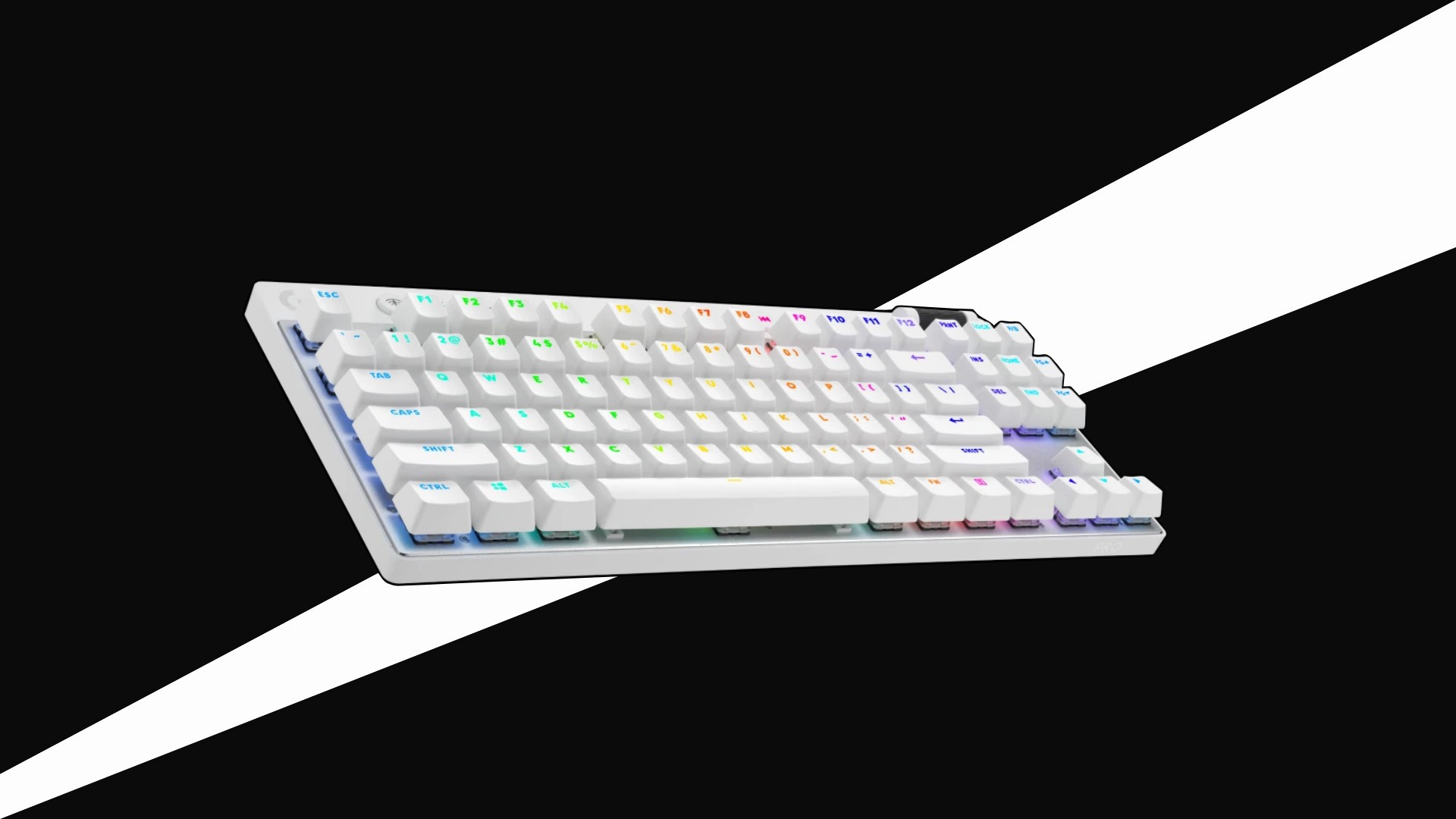
Logitech has announced the G PRO X TKL gaming keyboard, a compact and cordless peripheral meant to assist gamers in the highest levels of competition. The G PRO X TKL comes with a pro-inspired tenkeyless design for more room and comfort, and Lightsync RGB lighting for style. It features dual-shot PBT keycaps for durability and wear and tear prevention.
The keyboard’s standard layout allows users to customize it with third-party keycaps and additional media keys. Users may also set up macros and create quick access while grinding. Speaking of customization, they may pick between Tactile, Linear, or Clicky Switches to tailor-fit the keyboard to their feel.
The G PRO X TKL connects via Lightspeed, ensuring users of lag-free performance at up to a 10-meter range. That’s better responsiveness than standard Bluetooth. Additionally, it has a 1000Hz polling rate. Long gaming sessions are a breeze too, as the keyboard’s battery lasts up to 50 hours. Lastly, for gamers on the go, the G PRO X TKL is portable and comes with its own carry case.
Logitech’s latest gaming peripheral is now available online and at all partner retail outlets, including PC Express, Silicon Valley, DataBlitz, Octagon, Electroworld, Complink, iTech, Techwarez, GameOne, Interpace Computer Systems, GameXtreme, TTI, DynaQuest PC, Digi-Serv Solutions, Concept Computer, NUTECH, DFE (Davao Futurebright Enterprises), Villman, PCWorx, Abenson, Digistore, and Greenware.
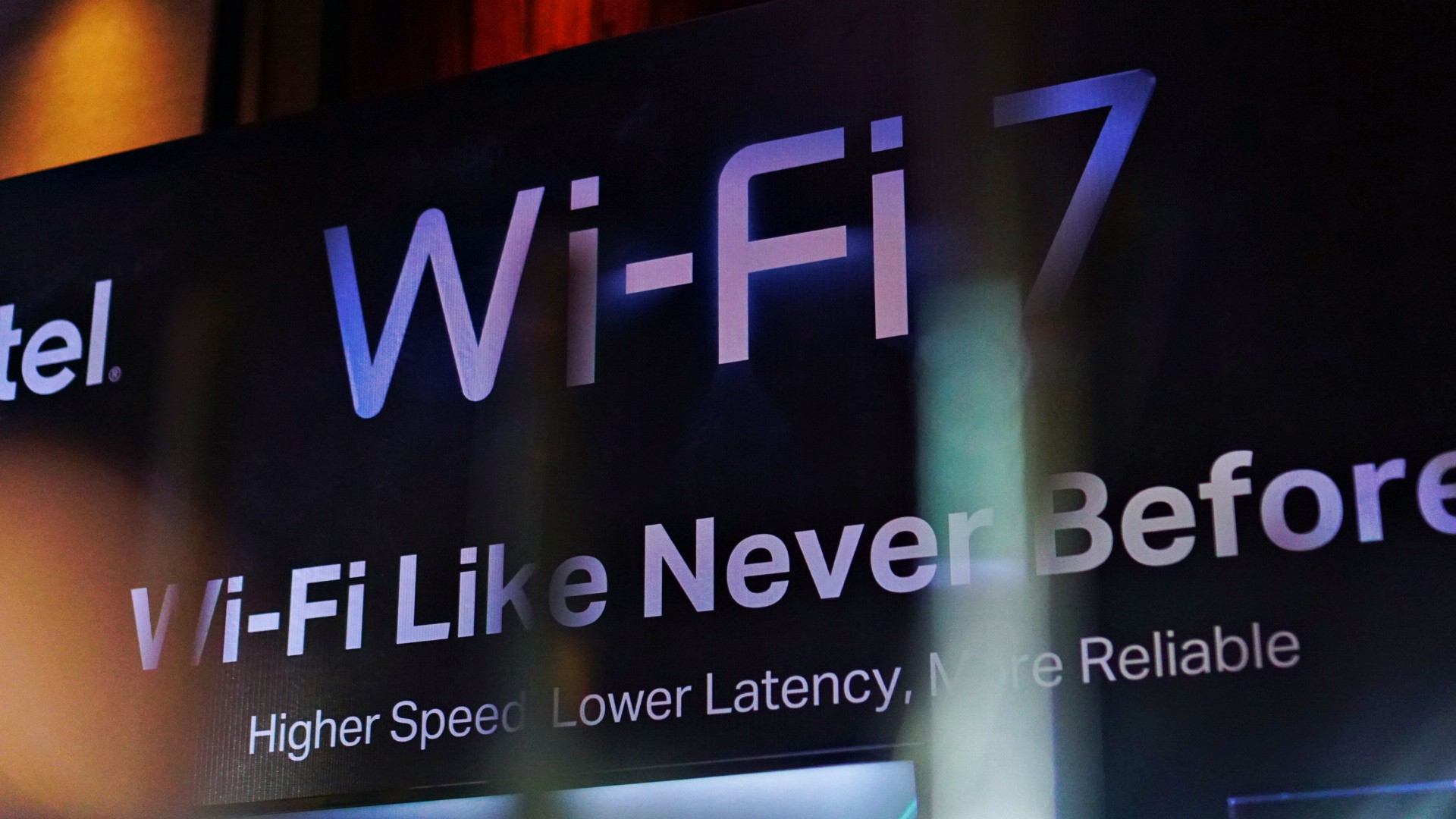
TP-Link has officially announced its new Wi-Fi 7 capable devices, including two new Archer routers and the DECO BE25 mesh. Particularly, the Archer BE230 which promises 49% better transmission speed is now available via TP-Link’s Shopee and selected retailers.
TP-Link’s Wi-Fi 7 products revolutionize the way users experience wireless connectivity. Aside from blazing-fast speeds and reduced latency 20% better than previous generation devices, these products come with several features like Multi-Link Operation to optimize network efficiency.
Users can expect better allocation of resources, reduced interference, and smoother data transmission overall. The devices also offer better and more reliable coverage across larger areas, reducing dead zones. The products also come with new security features and enhancements for better network protection. Among them are stronger encryption standards and enhanced defenses against emerging threats.
New Tapo lineup
Aside from the Wi-Fi 7 products, TP-Link has also unveiled a new lineup of smart home products, including the Tapo C425 wire-free security camera. The brand has also released the Tapo Smart Battery Video Doorbell, Tapo C720, and 2K QHD Smart Floodlight Camera, to name a new. These solutions will be released by May 2024.
Price, availability
The TP-Link Archer BE230 is priced at PhP 5,990. The brand will release another router, the Archer BE400, during the third quarter of 2024.
On the other hand, the TP-Link DECO BE25 mesh will be available by June 2024. It will come in the two-pack and three-pack options for PhP 13,990 and PhP 19,990, respectively.
Lastly, the RE235BE range extender and Archer TBE400UH adapter shall be released in June and July 2024, respectively. They are priced at PhP 4,990 and PhP 3,190.

Thinking of building a legitimate PC gaming setup at your place, or upgrading your existing one? Well, you’re in luck. ASUS ROG has just launched a bunch of new gaming devices during an event held in San Juan City, Metro Manila. There are a lot to choose from to suit your needs, including OLED monitors, peripherals, components, and even mini PCs.
Gaming monitors
Headlining the new batch of gaming monitors is the ROG Swift OLED (PG32UCDM). This 32-inch 4K QD-OLED panel delivers astounding visuals at up to a 240Hz refresh rate. Already in its third generation, the QD-OLED technology helps in displaying vibrant colors, deeper black hues, and brighter highlights. The monitor also promises 0.03ms response time and an advanced custom heatsink for cooling.
Alternatively, The ROG Strix XG27UCS and XG27ACS models bring games to life. The fast IPS panels offer 180Hz and 160Hz refresh rates, respectively, and 1ms GTG response time. These products are G-SYNC compatible and support Extreme Low Motion Blur (ELMB) Sync for smooth and tear-free gameplay. Moreover, they are DisplayHDR 400 certified and offer a wide DCI-P3 gamut. Users may also tinker settings further with the AI-powered GamePlus technology and Dynamic Shadow Boost feature.
There are six monitor models in total ranging from 24-inch to 49-inch sizes, available by order basis for the following prices:
- ROG Swift OLED PG49WCD: PhP 107,690
- ROG Swift OLED PG32UCDM: PhP 93,190
- ROG Swift OLED PG34WCDM: PhP 89,940
- ROG Swift OLED PG27AQDM: PhP 65,890
- ROG Swift Pro PG248QP 540Hz: PhP 63,290
- ROG Strix XG27ACS: PhP 17,990
Gaming peripherals
ROG Falchion RX LP
Looking for a new keyboard? the ROG Falchion RX Low Profile is a 65% compact gaming keyboard. With low-profile switches and two dampening foams, it offers an unprecedented typing and gaming experience. The keyboard can be connected via ROG SpeedNova wireless and the ROG Omni Receiver. Its interactive touch panel allows for several customization options.
ROG Carnyx
For those who love streaming their sessions or simply prefer communicating with teammates, the ROG Carnyx cardioid USB microphone features a 25mm condenser capsule and a 24-bit, 192kHz sampling rate capacity. It comes with high-pass and built-in pop filters to reduce noise and vocal plosives as well, while its shock mount minimizes vibrations.
The ROG Falchion RX LP is now on general sale for PhP 8,580, available in both blue and red colors. Gamers may choose between the black and white ROG Carynx variants for PhP 9,350.
ROG Cetra True Wireless
For an immersive audio experience, the ROG Cetra True Wireless SpeedNova remains the brand’s standard. The versatile gaming headphones can connect using Bluetooth or ROG SpeedNova 2.4GHz. It supports 24-bit 96kHz audio, Dirac Opteo, and Adaptive ANC to immerse users to high-resolution audio. Bone-Conduction AI microphones complement the headphones for superior call quality. Also, the headphones last up to 46 hours as well on a single charge.
ROG Keris II Ace
For those into FPS titles, the ROG Keris II Ace has an ergonomic shape tested by esports professionals. The 54-gram gaming mouse has industry-leading features for competitive play, comfort, and control. It is complemented by the ROG Polling Rate Booster for smooth cursor control. This ROG-exclusive accessory upgrades the polling rate up to 4,000Hz in wireless and 8,000Hz in wired mode.
Both the Keris II Ace gaming mice and ROG Cetra True Wireless SpeedNova gaming headphones will be released in May 2024, with prices yet to be announced.
ROG Ace Collection
The ROG Ace collection will also be coming soon. These gaming mice and mousepads are designed with the help of esports professionals and world record aimers at Aim Lab. They will be available in the following models later this year:
- ROG Harpe Ace Aim Lab Edition
- ROG Falchion Ace
- ROG Hone Ace Aim Lab Edition
- ROG Hone Ace XXL
- ROG Moonstone Ace L
Back to the Future series
Furthermore, those thinking of a DIY PC assembly will benefit from ASUS’ Back-to-the-Future series which features hidden-connector design for a cleaner and more aesthetically pleasing look. The series includes motherboards, graphic cards, and chassis for the following prices:
Motherboards
- ROG Maximus Z790 Hero BTF: PhP 42,460 (May 2024)
- TUF Gaming Z790 BTF WiFi: PhP 22,430 (April 2024)
Graphics cards
- ROG Strix RTX 4090 O24G BTF Gaming: PhP 141,370 (May 2024)
- TUF RTX 4070 TIS O16G BTF (white): PhP 68,560 (April 2024)
Chassis
- TUF Gaming GT302 (white): PhP 7,360
- TUF Gaming GT302 (black): PhP 7,070
- ROG Hyperion BTF (black): Coming soon (May 2024)
Coming soon: ROG Rapture WiFi 7, ROG NUC
Lastly, the ROG Rapture quadband WiFi 7 gaming router is tailored for next-gen computing, with speeds of up to 25Gbps and dual 10Gbps ports. You may enjoy up to 16 simultaneous WiFi streams for several content like videos, games, and browsing for everyone at home.
On the other hand, the ROG NUC features Intel Core Ultra 9 processors and NVIDIA RTX 4070 graphics, all packaged in a compact 2.5L form factor.
This ultra-small yet ultra-powerful chassis is designed for quick system access, making upgrades and cleaning quick and easy. Compatible with the Raikiri Pro controller, the ROG NUC is the ultimate choice for gamers seeking uncompromised performance and flexibility.
-
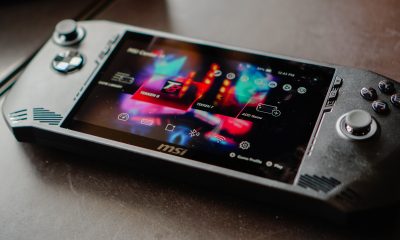
 Features2 weeks ago
Features2 weeks agoWhy choose the MSI Claw?
-
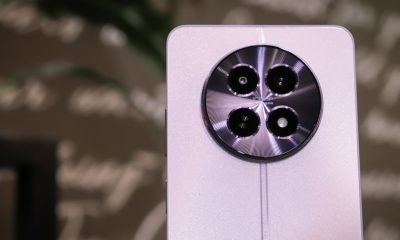
 Reviews7 days ago
Reviews7 days agorealme 12 5G review: It was enchanting to meet you
-
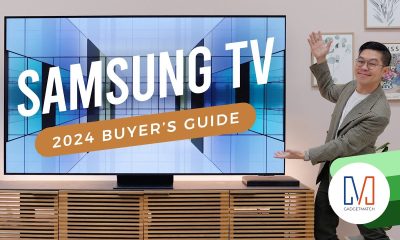
 Buyer's Guide2 weeks ago
Buyer's Guide2 weeks ago2024 Samsung TV: Buyer’s Guide
-

 Reviews2 weeks ago
Reviews2 weeks agoJBL Soundgear Sense review: Make every run magical
-
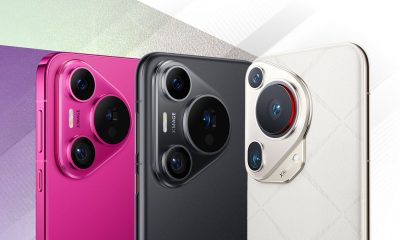
 Smartphones2 weeks ago
Smartphones2 weeks agoHuawei Pura 70 series is live in China
-

 Reviews3 days ago
Reviews3 days agoOnePlus 12R review: Making sense of OnePlus’ latest flagship
-

 Reviews2 weeks ago
Reviews2 weeks agoChallengers review: A thrilling drama wrapped as a tennis anime
-
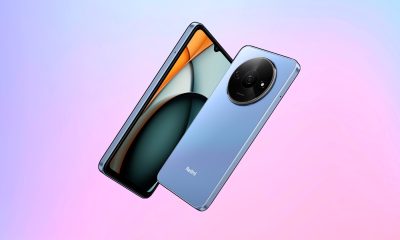
 News1 week ago
News1 week agoXiaomi Redmi A3 Philippine pricing, availability



